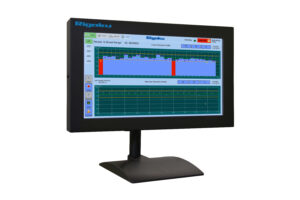
Scanning Multi-element Process Coatings Analyzer by EDXRF
Key Advantages & Features
Designed explicitly to meet the needs of challenging conditions found in coating and converting processes, NEX LS helps maintain routine quality control for web and coil applications. The NEX LS linear scanner provides real-time coat weight profiling of your process.
- Real-time process coating control
- Cross and machine direction coat weight profiling
- Full scanning or user-defined positions
- Measure elements aluminum (AI) to uranium (U)
- Robust Rigaku NEX Series optical kernel
- Industrial touchscreen user interface
- Easy automatic calibration and routine operation
- Minimal routine maintenance and a 2-year warranty

Video
Additional Notes
- Product Overview
- Common Applications
In-line EDXRF Offers Superior Analytical Performance
To deliver superior analytical performance and reliability, NEX LS features proven EDXRF technology. Its measuring head was developed using technology from the well-established NEX Series benchtop instrumentation. EDXRF is a non-destructive technique and offers users valuable information about the coating’s properties or product’s composition.
The measuring head, mounted on a rigid beam, is equipped with a linear traversing mechanism ensuring constant head-to-surface distance. Where needed, the elemental composition of a coating is measured directly. In contrast, coat weight (or coating thickness) can be measured directly (where the counting rate for an element is proportional to thickness) or indirectly by measuring the attenuation of some substrate element (where the counting rate is negatively correlated to thickness).
NEX LS Gives Real-time Process Control
When the analytical head sweeps back and forth across a moving web or coil, the scanner transmits measurements to a console box and industrial touchscreen computer. Users can choose full scanning mode or fixed analysis positions. Real-time data is displayed as a graphical cross-direction and machine-direction profile.


NEX LS software is easy to use and provides a clear visual representation of the process, helping users make immediate quality control decisions. With an intuitive user interface and flow bar method builder, technicians can easily define applications unique to their processes.

Advanced roll reporting capabilities produce quality records or audit trails. Recordings include machine direction, cross direction, full lane average graphs, and more. Users can customize reports, export them as PDF or CSV, and store copies to USB or a network using industry-standard communications protocols.
Solve Challenges in Real-time, From Start to Finish
Controlling coating thickness or composition is vital to meet end-use specifications for the release, metal finishing, and automotive industries. If coatings or composition are not in spec throughout the process, this could lead to product rejection or failure. Silicone coaters can achieve a targeted lay down to ensure release properties or barriers are not compromised. If too little or too much silicone is applied, this can change the product’s characteristics, resulting in product rejection and reduced profitability. With an increased demand for fuel cell and battery-powered electric vehicles, profiling the substrate or loading is crucial in manufacturing. NEX LS provides real-time results throughout these processes and is an invaluable tool for new product development. Common applications include:
- Silicone release coaters
- Converters – silicone on plastic or paper
- Vacuum-formed plastics – denesting silicone coatings
- Specialty films – moisture and air barriers
- Conversion coatings
- Fuel cell loadings
- Metalized plastic
- Top coatings on metal coil
- Fire retardants on fabric
